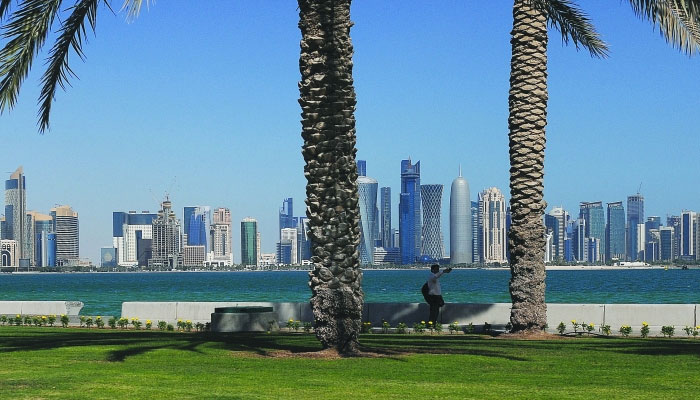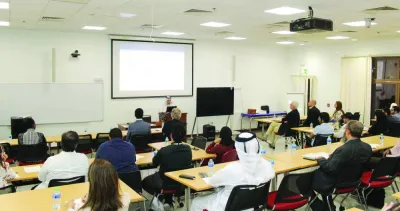Unlike Saudi Arabia and Kuwait, the two most oil-dependent economies in the GCC, Qatar has managed to at least partially diversify its economy in the past decade, BMI said. PICTURE: Shaji
By Pratap John/Chief Business Reporter
The sharp decline in oil prices is unlikely to cause "serious damage" to Qatar's economy and retail sector, BMI said, as it expects mega projects to "stimulate" the country's economy for at least the next seven years.
Multiple nationwide projects, including World Cup 2022, Doha Metro and the expansion of Hamad International Airport will stimulate the country's economy for at least the next seven years, BMI said.
“With rising and diversifying economic activity, more retailers will notice the country's appeal as new firms enter the country and the market expands considerably,” BMI said.
Unlike Saudi Arabia and Kuwait, the two most oil-dependent economies in the Gulf Cooperation Council (GCC), Qatar has managed to at least partially diversify its economy in the past decade. Thanks to some immunity to the fluctuations of oil and gas prices and rollout of new strategic projects, the growth of Qatar's real economic output is on track to accelerate in 2015; from 6.2% in 2014 to 6.6%, BMI said.
In the meantime, construction and expansion of retail real estate is allowing more retailers to enter and grow in the country providing a wider brand choice to the country's consumers. Demand is growing too; the total population is on track to post a compound annual growth rate (CAGR) of 2.9% in 2015, propelled by growing inflow of expatriate workers whose labour force is demanded by construction, manufacturing and service companies based in Qatar.
Despite the growth of a low-paid population, average household income will grow at 6.1% annually as the country's spending power continues to explode, BMI said.
Household spending in one of the world's wealthiest countries is projected to continue growing at a booming pace. The annual growth of average expenditure per household will post a strong rate of 12.1%, one of the fastest in the world. “Unfortunately, income disparity is bound to widen too,” BMI said.
BMI expects Qatar to start constructing some nine new stadiums and expanding three existing ones in the next two to three years for the FIFA World Cup 2022. In addition, Doha is building a metro network that is planned to begin operating in 2019.
The Hamad International Airport, which opened in 2014, will start its second phase of expansion in 2016. Collectively, all of the projects currently in the pipeline will demand more than $200bn of government expenditure and unavoidably necessitate another influx of cheap labour force from South Asia throughout 2016-2019.
A growing number of low-paid, predominantly male workers will further expand the number of people in the bottom income levels who remit most of their incomes and are unable to afford products in modern retail stores in the country, hence relying on traditional vendors, BMI said.
“Despite this, high-end and luxury retailers are bound to prosper in Qatar,” BMI said.
While the local population is hardly growing, its spending power is expanding. To serve the growing needs of Qataris, as well as affluent expats and tourists, three new shopping centres - Mall of Qatar, Doha Festival City and Place Vendome are set to open in Doha within the next two years.
The composition of mall tenants will likely reflect European and American malls, including numerous international clothing, consumer electronics and household goods brands. However, all of the new developments will devote special parts of their areas to luxury retailers, BMI said.
BMI said, “With the growing spending power in Qatar and expanding supply of retail area, high-end firms will enjoy a resilient market largely unbothered by the drop in international commodity prices. World Cup 2022 is expected to give Qatar a similar economic boost to the one enjoyed by Dubai before Expo 2020 ensuring a stable growth of output, largely supported by government spending. As a result, bullish investment and household consumption are likely to remain throughout the forecast period and beyond.”



